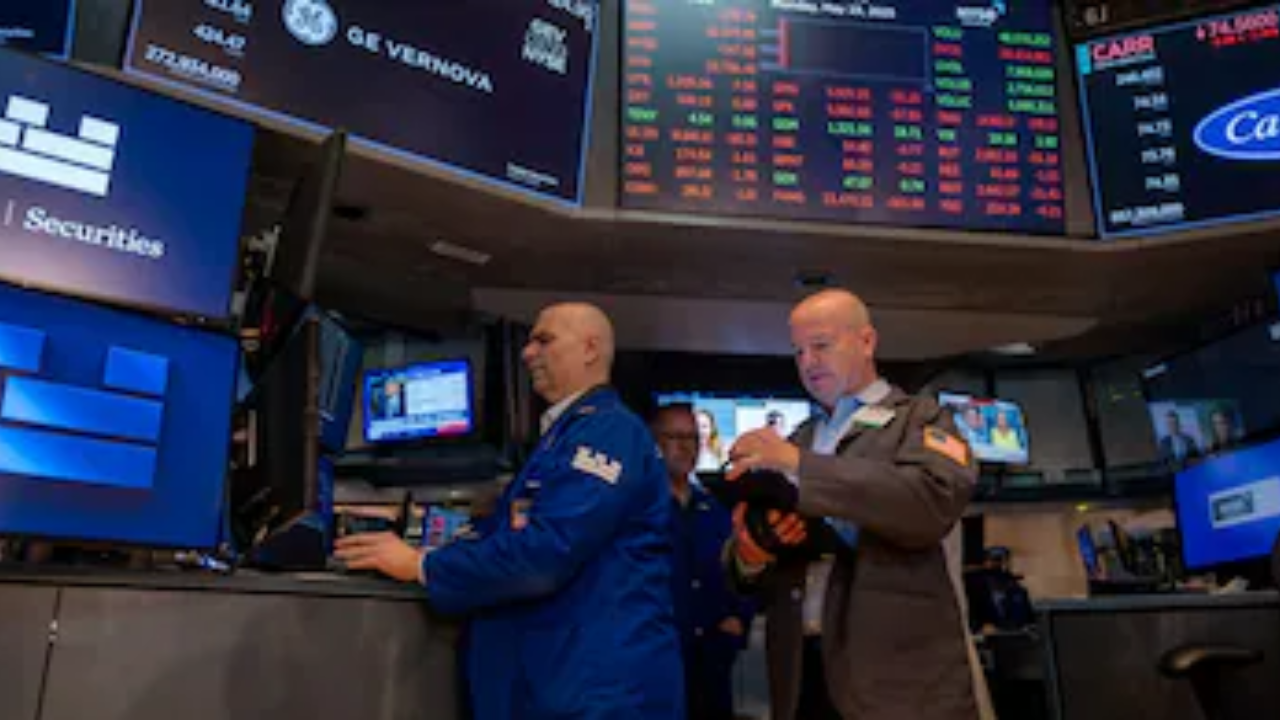
By: Payel
Published on: May 23, 2025
Introduction
On May 22, 2025, global equity markets treaded water as investors digested a razor-thin approval of the U.S. tax reform bill and new data showing the UK government’s borrowing spiked to its fourth-highest April level on record. In New York, the Dow Jones Industrial Average edged off its flatline, while the tech-heavy Nasdaq Composite ticked up amid mixed corporate earnings. Across the Atlantic, London’s FTSE 100 slid nearly 1%, and the pan-European STOXX 600 followed suit, as traders weighed concerns over mounting debt burdens and slowing private-sector growth. This deep dive examines the key drivers behind market movements, from U.S. fiscal policy to U.K. public finances and PMI indicators, and what they mean for investors heading into the summer months.
On May 22, 2025, the U.S. House of Representatives passed President Donald Trump’s tax reform package—dubbed the “big, beautiful bill”—by a single vote. That razor-thin margin underscored deep partisan divides and left markets cautious:
Despite the headline risk, May 22 saw the S&P 500 (^GSPC) trade within a narrow 0.3% range and the Dow (^DJI) finish flat. The Nasdaq (^IXIC) outperformed, rising 0.5% as investors favored tech stocks on hopes of resilient earnings and buybacks. However, trading volumes were subdued, reflecting uncertainty around how swiftly the new tax rules will translate into corporate investment plans.
In London, the FTSE 100 closed down 0.8% at 8,763.39, weighed by banks and commodities shares. Investors cited two main factors:
Germany’s DAX (^GDAXI) dipped 0.5%, while France’s CAC (^FCHI) fell 0.7%. The STOXX 600 closed down 0.8%, led lower by autos and industrial stocks. Traders remained cautious ahead of the European Central Bank’s policy meeting on June 5, where officials will weigh growth risks against still-elevated inflation.
The Office for National Statistics (ONS) reported that UK public borrowing reached £20.2 billion in April 2025—£1 billion more than April 2024 and well above economists’ consensus forecast of £18 billion. Key drivers included:
ONS deputy director Rob Doody noted, “Receipts were up on last April…however, this was outweighed by greater spending due to rising public services’ running costs and increases in benefits and state pensions.” Persistent high borrowing risks crowding out private investment and could force steeper tax rises or deeper spending cuts down the line.
Early flash data from the S&P Global UK Composite PMI showed that private-sector output contracted for a second consecutive month in May, but the pace of decline eased:
While the uptick in the composite PMI reading offers a glimmer of hope, business confidence languishes near two-year lows as firms grapple with cost inflation and global trade uncertainty. A sustained rebound will depend on clearer signals around fiscal policy—both in the U.S. and the U.K.—and central banks’ next rate moves.
Susannah Streeter of Hargreaves Lansdown commented, “The growing mountain of U.S. debt is causing ripples…investors are baulking at financing the Trump administration. These concerns have hit sentiment in Europe, given the repercussions that financial difficulties in the world’s largest economy would have globally.”
With major central banks on hold—or even hinting at further tightening—markets face a balancing act between growth optimism and policy headwinds:
Investors should prepare for continued volatility, focusing on sectors with clear earnings visibility—such as energy in a structurally tight oil market and select technology names backed by strong cash flows.
Conclusion
As of May 22, 2025, markets stand at a crossroads. The U.S. tax overhaul’s narrow passage and the UK’s record April borrowing underscore the twin challenges of fiscal stimulus and debt sustainability. Meanwhile, PMI data suggest the global economy is neither accelerating nor collapsing but hovering at a critical inflection point. Against this backdrop, investors should adopt a balanced stance—seeking growth opportunities in select equities while hedging against policy missteps and slowing activity. By staying informed on debt trajectories, central-bank guidance, and sector-specific drivers, market participants can better navigate the choppy waters ahead.
Comments
No comments yet. Be the first to comment!
Leave a Comment